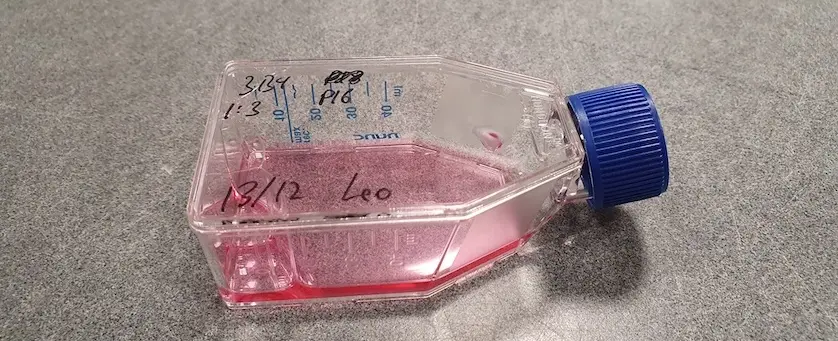What is a Material Transfer Agreement (MTA)?
When do you need an MTA and is an MTA mandatory? Are there examples of an MTA?

The abbreviation MTA stands for Material Transfer Agreement. It is a legal contract used in the transfer of research material between two parties, such as universities or research institutions. There is also a similar document for the transfer of data (the DTA) or a combination of both (the MDTA). In many cases, the transferred materials fall under intellectual property rights, such as patents and copyrights. An MTA outlines the conditions under which the transfer takes place, including the rights and obligations of the parties involved, and it governs any restrictions on the use or distribution of the materials.
The use of an MTA can be important for several reasons. First, it helps protect the intellectual property rights of the parties involved by clarifying the ownership and permitted use of the materials. Second, it can help prevent the unintentional or unauthorized use of the materials. Third, it helps ensure that the materials are used in a responsible and ethical manner.
MTAs are widely used in the Life Sciences. Biological or body-derived materials transferred using an MTA include cell lines (see our image at the top), self-developed culture media, reagents, antibodies, biopsies, an animal model, a database with DNA sequences, or an AI algorithm.
Thus, an MTA is a contract that establishes that one party may conduct research using the materials of another party. These agreements provide a way to protect the intellectual property rights of the owners of an invention while also promoting the sharing of data and material by researchers. After all, we all want science to advance, but we also want to protect our inventions.
In principle, this is a good thing. However, some researchers and institutions have a negative view of MTAs because they can be overly complex and may hinder research. Nonetheless, MTAs are important for defining the rights, responsibilities, and obligations of the parties involved in collaborative research and must be carefully drafted, especially regarding intellectual property ownership of the transferred materials.
Although the process of negotiating and signing an MTA may take some time and effort, it is generally considered a necessary step to protect the interests of all parties involved. It is important to carefully review and negotiate the terms of the MTA to ensure that they are acceptable and do not conflict with your research goals. So don't just sign it quickly because your Board of Directors wants you to. If you have concerns about the impact of the MTA on your research timeline, it may be useful to discuss these concerns with the other party and plan ahead to allow for any necessary negotiations or revisions. Taking the time to properly document and protect the transfer of research materials can ensure that your research is conducted responsibly and ethically and can prevent legal or ethical issues in the future.
The MTA clearly outlines the general conditions of the transfer, including any restrictions on the use or distribution of the materials. It may also specify any licensing or ownership arrangements for intellectual property related to the materials. By clarifying the ownership and permitted use of the materials, the MTA helps protect the intellectual property rights of the parties involved.
Additionally, the MTA may include specific provisions regarding the use of the materials in research or commercial applications. For example, it may require that resulting publications or inventions be described in relation to the original source of the materials. The providers of the materials must be explicitly mentioned, which helps ensure that the involved parties receive proper recognition for their contribution to the research.
Overall, the MTA is an important legal contract that helps define and protect the intellectual property rights associated with the transfer of research material. It is crucial for researchers to carefully review and negotiate the terms of the MTA to ensure that their rights and interests are protected.
What is included in an MTA?
Regardless of their length and complexity, most MTAs often include one or more of the following provisions:
- A preamble;
- Definitions;
- A description of the use of the materials;
- What constitutes confidential information and how it should be handled. However, this may also be specified in a separate confidentiality agreement;
- Warranty provisions;
- Applicable intellectual property rights;
- Liability and/or indemnity provisions;
- Publication rights;
- Governing law;
- Termination of the agreement;
- Signatures. If you want to avoid trouble, make sure the MTA is signed by an authorized person, such as a dean or research director. Do not sign it quickly yourself because you are in a hurry with your research.
- Any figures and other attachments.
Some of these clauses are relatively standard in an MTA, while others can vary significantly depending on the specific situation.
Drafting and signing an MTA is not legally required when exchanging research material, but it is a good practice and can prevent future problems. The importance of drafting an MTA, which outlines the agreements for providing and using materials and/or data when they are provided to other researchers, is also recognized and included in standard 5.7.8 of the Health Research Code of Conduct. More information about this can be found on the website of the joint authors.
To facilitate the sharing of data and/or materials for health research within the European Union, the University Medical Hospitals have mutually developed MTA, DTA, and MDTA templates. These templates can be found in PDF and Word format on the site of the initiators and are free to download and use.
Similar templates for Material Transfer Agreements (MTAs), Data Transfer Agreements (DTAs), and combined agreements (MDTAs) exist in the United States as well. Many universities, research institutions, and organizations in the U.S. provide templates and resources for these agreements to facilitate the transfer of research materials and data. Here are a few examples:
- National Institutes of Health (NIH): The NIH offers a variety of MTA templates and resources through its Office of Technology Transfer. These templates are designed to accommodate different types of transfers and collaborations.
- Association of University Technology Managers (AUTM): AUTM provides resources and templates for MTAs and other agreements, which are widely used by research institutions and universities in the U.S.
- Individual Universities: Many U.S. universities have their own MTA templates and guidelines available on their technology transfer office websites. Examples include Harvard University, Stanford University, and the University of California system.
You can usually find these templates by visiting the technology transfer or research office websites of major research institutions and universities in the U.S. They are often available for free download and use, similar to the European templates mentioned.
Similar templates and resources for Material Transfer Agreements (MTAs), Data Transfer Agreements (DTAs), and combined agreements (MDTAs) are available in most countries. To find these templates, you can visit the official websites of the respective research councils or university research offices. These resources are typically provided to facilitate the smooth transfer of research materials and data, while protecting intellectual property and ensuring compliance with legal and ethical standards.
